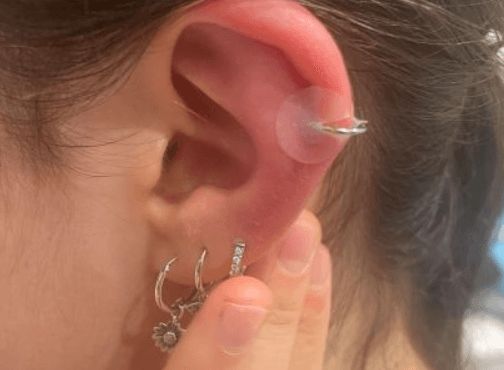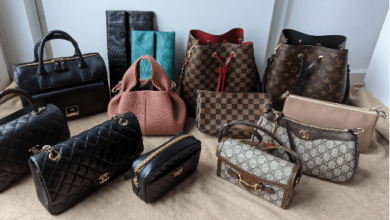Step-by-Step Guide to Avoid and Fix a Sinking Piercing

Body piercings can add flair to your personal style, but they sometimes come with complications. One common issue is a piercing that appears to be sinking into the skin. This is a cause for concern because it can lead to infections, scarring, or even jewelry rejection. If you notice your piercing, whether it’s your nose stud or earring hoop flush with skin, is sinking, take immediate action.
In this step by step guide, we’ll walk you through how to fix a nose piercing spikes and avoid further damage.
1. Identify the Cause of the Sinking Piercing
Before taking action, it’s important to understand why your piercing is sinking into the skin. Common causes include:
- Improper Jewelry Size: Jewelry that’s too small can sink into the skin as the surrounding tissue swells during the healing process.
- Inflammation or Infection: If the area around your piercing is red, swollen, or warm to the touch, it may be an infection. The infection causes the skin to swell over the jewelry.
- Tight Piercing Placement: Sometimes, the piercing hole is placed too tightly, causing the jewelry to sink as the skin heals.
- Piercing Rejection: In rare cases, your body may treat the jewelry as a foreign object and start pushing it out. It causes the appearance of sinking.
If the sinking is due to infection, it’s important to treat it as a medical issue first. Seek advice from a healthcare professional or your piercer.
See also: How To Prepare For Professional Sofa Cleaning: A Step-By-Step Guide
2. Don’t Panic—Avoid Removing the Jewelry Immediately
It might be tempting to remove the jewelry when you notice it sinking, but doing so could trap bacteria inside. This can lead to further complications. If the piercing has become infected, removing the jewelry could also cause the hole to close with bacteria still inside. This can worsen the situation more.
Instead, leave the jewelry in place and assess the situation. However, if the jewelry is causing pain or is embedded too deeply, visit a professional piercer immediately.
3. Clean the Piercing Gently Twice a Day
Keeping the piercing clean is vital to prevent or treat infections. Use a saline solution or a mild, nonalcoholic antiseptic to clean the area. You can buy a saline spray from a pharmacy or make your own. Do it by dissolving 1/4 teaspoon of non-iodized sea salt in a cup of warm water.
- Soak a Cotton Ball: Gently dab the cotton ball soaked in saline solution around the piercing. Avoid harsh scrubbing, as this can irritate the skin further.
- Rinse Thoroughly: Make sure the solution rinses away any buildup of dirt or bacteria. Pat the area dry with a clean tissue or paper towel.
4. Assess Whether the Jewelry Needs to Be Changed
If the jewelry is too tight or too small, it might be causing the piercing to sink. In this case, you’ll need to switch to a larger or longer piece of jewelry, such as silver tiny hoop earrings. This can reduce pressure and help the skin heal properly.
Important: Never attempt to change the jewelry yourself if the piercing is still healing. Visit your piercer, who can recommend a more suitable option and change it safely. High quality jewelry, like silver tiny hoop earrings, can help avoid issues in the future by reducing skin irritation.
5. Adjust the Jewelry Position Carefully
If the sinking is minimal, gently adjust the position of the jewelry so it sits properly on the skin surface. Here’s how:
- Use Clean Hands: Always wash your hands with antibacterial soap before touching the piercing.
- Gently Move the Jewelry: Slowly and carefully rotate the jewelry to ensure it moves freely in the hole. Avoid forcing it, as this could damage the tissue.
Be gentle! If there is pain or resistance, stop and consult a professional piercer.
6. Apply a Warm Compress to Reduce Swelling
If swelling is pushing the jewelry into the skin, a warm compress can help reduce inflammation. Here’s how to do it:
- Soak a Clean Cloth in Warm Water: Make sure the water is warm but not scalding.
- Apply to the Piercing for 5–10 Minutes: Hold the warm compress over the piercing, allowing the heat to reduce swelling and encourage blood flow to the area.
Repeat this process a few times a day to alleviate swelling and allow the jewelry to sit more comfortably.
7. Monitor the Healing Process Closely
Healing times vary depending on the location and type of piercing. While nose piercings can take several months to heal, ear piercings might heal faster. Monitor the piercing regularly for signs of infection or rejection. These signs include:
- Redness and Swelling: Some redness is normal, but excessive swelling may indicate an issue.
- Pus or Discharge: If you notice pus (especially if it’s yellow or green), it’s likely infected.
- Pain and Heat: A mild discomfort is normal, but sharp pain or heat around the area is not.
If you notice any of these symptoms, seek professional help.
8. Visit Your Piercer or a Professional for Assistance
If your piercing continues to sink despite your efforts, it’s time to consult a professional piercer. They can assess whether the jewelry needs changing or if further medical attention is required. Don’t wait too long—taking early action can save your piercing and prevent long-term damage.
9. Use High Quality Jewelry to Prevent Future Issues
To prevent sinking piercings in the future, always choose high-quality, properly sized jewelry. Look for materials like titanium, surgical steel, or sterling silver. For ear piercings, silver tiny hoop earrings are a great choice, as they provide flexibility and comfort while minimizing skin irritation.
Jewelry that’s too tight, small, or made of poor-quality materials is more likely to lead to problems like sinking. Make sure to always choose trusted suppliers who specialize in body jewelry.
10. Follow a Strict Aftercare Routine
After your piercing heals, continue following an aftercare routine. Clean the area regularly, avoid touching it with dirty hands, and always change jewelry carefully. Even healed piercings can be susceptible to infections or other complications if neglected.
Final Thoughts
A sinking piercing can be alarming, but it’s not necessarily the end of your piercing journey. By understanding the causes and following these steps, you can often prevent and fix the issue without permanent damage. Remember, the key to avoiding complications like this in the future is choosing the right jewelry and following a strict aftercare routine.
If you’re noticing your silver tiny hoop earrings, or your piercing sinking into the skin, act quickly. Clean the area, adjust the jewelry, and seek professional advice if necessary. Prevention, as always, is the best cure.
FAQs
Why is my piercing sinking, and can I fix it myself?
Sinking occurs from pressure or improper jewelry; you can switch to larger jewelry, but seek professional advice.
What steps should I follow to fix a sinking piercing?
Gently replace your jewelry with a larger, hypoallergenic option, and clean the area regularly to reduce irritation.
Can changing my jewelry size help prevent further sinking?
Yes, using a larger gauge or longer post helps reduce pressure and prevents your piercing from sinking deeper.
Should I remove the piercing if it’s sinking?
Don’t remove the piercing unless advised by a professional, as it can cause the hole to close or worsen damage.
How can I avoid future piercing sinking issues?
Choose proper jewelry, avoid pressure on the piercing, and maintain consistent aftercare to prevent sinking.






